What can you plant after garlic?
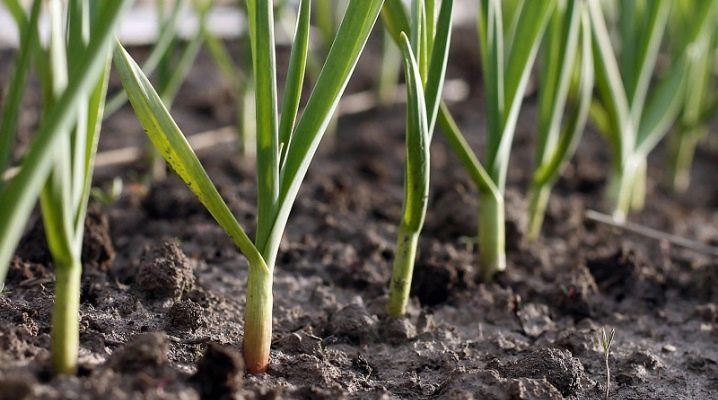
Experienced gardeners know that some crops are incompatible with each other. In this regard, it is not recommended to grow them in adjacent beds, as well as to plant them on plots after each other for the next year. Incompatibility affects the quantity and quality of the crop.
Can you plant garlic after garlic?
Garlic is unpretentious in care and maintenance. To get a good harvest, you need to choose a lit area with neutral soil. During cultivation, garlic requires only moderate watering and periodic weeding. During the season, you can loosen the soil 1-2 times. In order to grow vegetables in sufficient quantity and in good quality, it is recommended to observe the crop rotation.
One of the main rules of scientifically based annual rotation is that you cannot plant two years in a row in the same place of culture belonging to the same family.

Based on this rule, it is clear that you cannot place garlic after winter and regular garlic. If this rule is overlooked, then a good harvest should not be expected in the second year. There are several reasons for this. The first reason for the low yield is that garlic has already managed to take certain nutrients from the soil in the first year of cultivation. So, after growing a vegetable, the earth loses a lot of phosphorus and potassium. If the next year it was not possible to restore them, then a good harvest will no longer be obtained.
The second reason is pests. During the first year, garlic manages to attract pests to the soil, which are the source of some diseases for this crop. Such pests include:
- onion fly;
- aphid;
- onion moth;
- stem nematode;
- four-legged tick;
- root mite;
- secretive proboscis.
If in the first year one or more of them were present in this area, then it is possible that the larvae of pests survived in the soil, which in the second year will become even more active than their predecessors and cause significant damage to the crop.
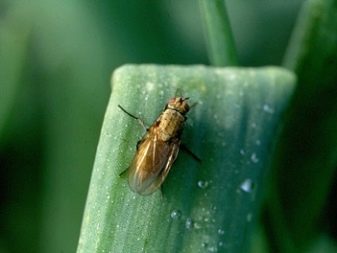
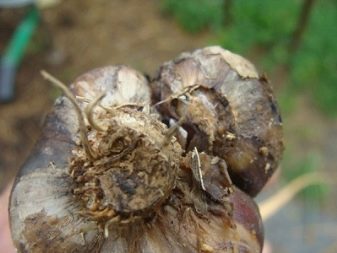
Best options
You cannot plant garlic after garlic. Inexperienced gardeners mistakenly believe that any other crops are suitable. But this is not the case. After garlic, only plants and vegetables of a certain category can be planted on the same plot of land.
Green manure plants
In most regions, the harvest of garlic begins in July. The place from under it will be vacated, and many gardeners are thinking about what to occupy it with. In this case, green manure plants will be the best option for sowing. Their advantages are as follows:
- improve the structure of the soil;
- saturate it with nitrogen;
- minimizes weed growth;
- protect from wind blowing and washing away by rains.
There are many green manure plants that are planted after garlic. Such crops include:
- cereals: wheat, rye, oats, millet;
- legumes: peas, beans, lentils, lupine, and clover
- cruciferous: mustard, rapeseed, rape.
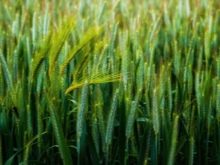
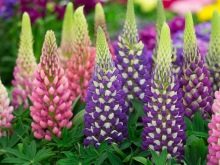

You can also sow phacelia, which belongs to the Burachnikov family.
Agronomists strongly recommend periodically resting the soil by sowing green manure. Even if the site is small, you can take turns providing a recovery period. Separately, it should be said about the simplest and most unpretentious siderata - mustard. After the harvest of garlic is harvested, the garden needs to be dug up, simultaneously removing the weeds that are encountered. The soil is spilled with water.Mustard seeds must be sown in a chaotic manner, lightly sprinkled with earth. Already 10-14 days after planting, the first shoots will appear on the site.
Thick mustard greens look beautiful on the outside. It can be used in food, for example, it can be added in small quantities when preparing salads. In autumn, in September or October (depending on the climate and weather conditions), the mustard must be mown. Remove the tops to a compost pit to obtain humus, and plow the garden bed together with the roots. All this not only enriches, but also structures the soil. Mustard contains bioactive substances that have a negative effect on parasites such as wireworms and nematodes.
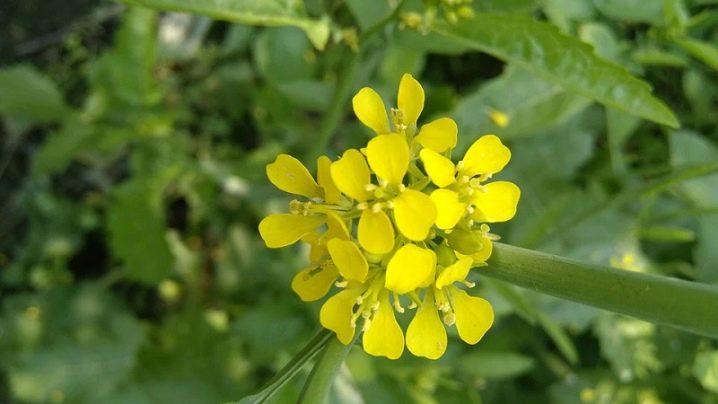
Vegetables
If you do not want to plant green manure that has been vacated in the garden, then you should pay attention to vegetables. In August, it starts to darken early and sunrise comes later, so so-called short day crops are most suitable for sowing. These include radishes, lettuce, and arugula. Before planting, rotted compost must be introduced into the soil. This is necessary in order for the soil to receive nutrients. If everything is done correctly, then before the onset of the first cold weather, you can still get a full harvest of radishes and greens, which can also be used to prepare fresh salads.
As already said, it is not recommended to plant garlic after garlic next year. The main contenders for this place should be the following vegetables: potatoes, cucumbers, eggplants, zucchini, pumpkin, carrots and legumes. It is permissible to place tomatoes, beets and cabbage in the same area. A strict taboo is imposed on the sowing of any crops that belong to the Onion family.
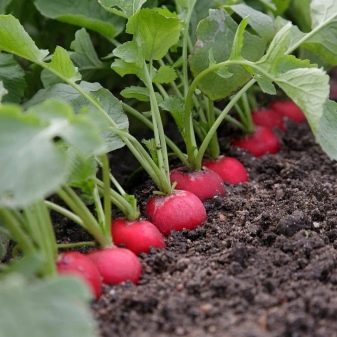

Berries
During its stay in the garden, garlic releases phytoncides in large quantities. They are volatile bioactive substances that prevent the formation of rot. That is why agronomists recommend planting strawberries and strawberries after garlic. In this case, you can get a good harvest of berries due to the fact that they will be protected from rot for 1-2 seasons.
In order to plant strawberries in this place in the fall, you just need to dig up the garden and remove the weeds. Next, you need to dig small holes, fertilize and plant strawberry bushes.
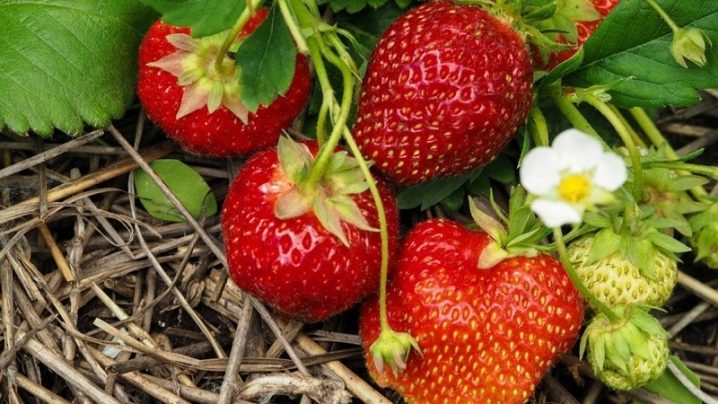
Ornamental plants
Garlic is a good precursor for flowers. Asters, marigolds or zinnias can be planted on the site. These ornamental plants are also maintenance-free. Moreover, if some pests (onion fly, aphid) have survived in the soil from last season, they will not attack the flowers and will leave the site on their own. If next year it is planned to occupy this space for vegetables or berries, then it is recommended to plant annual ornamental plants. You can fill this bed with perennials, then for the next planting spring it will already be occupied. In order to plant permitted vegetables and other crops, it is recommended to first carry out preparatory measures for the beds. To create favorable conditions, you need to do the following:
- dig up the soil;
- if possible, remove all existing weeds;
- treat the selected area of the soil with fungicidal agents;
- fertilize.
If there is confidence that there are pest larvae in the soil, then processing can be done. The best remedy for this purpose is a solution of copper sulfate. It's pretty simple to prepare it. You need to take a bucket with a volume of 20 liters, fill with water and dissolve 200 g of copper sulfate. The solution is enough to process 4 sq. m. soil. Additionally, fertilization is recommended. The most suitable are: urea, humus, rotted manure.
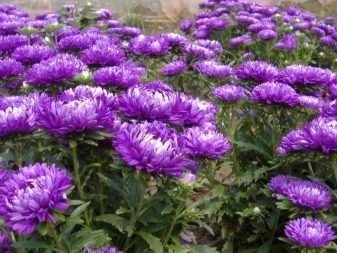
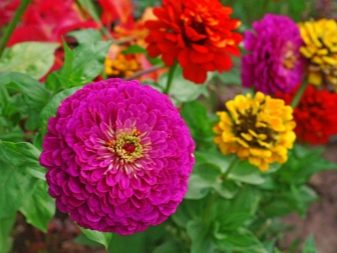
What shouldn't be planted?
For the successful organization of crop rotation on the site, it is not recommended to plant identical plants in the same place for two years in a row. So, after garlic, in no case should you plant onions, since both plants have common diseases. If the garlic was attacked by some kind of pest, then with a high degree of probability we can say that in the second year the onion will also hurt. Accordingly, the harvest will be reduced several times. In addition, it is not recommended to plant turnips, early varieties of cabbage. These crops will also feel uncomfortable.
It is noteworthy that garlic also cannot be planted in any area, since there are certain requirements for predecessors. TOIt is categorically forbidden to place it on the site where onions were grown in the recent past. The fact is that the latter takes potassium from the soil, which is also necessary for garlic. These crops have common diseases, so even the neighborhood is highly undesirable. Crops such as potatoes, cabbage, beets and carrots are not particularly pleasant predecessors.
The latter depletes the soil so much that next year it is recommended to sow this area only with green manure plants. Good precursors for garlic will be: squash, pumpkins, cabbage and cauliflower, greens of all kinds, beans and peas. If you plant the vegetable in question in the garden after these vegetable crops, then the harvest with proper care will be good. This is possible due to the fact that these plants enrich the soil with the necessary substances.
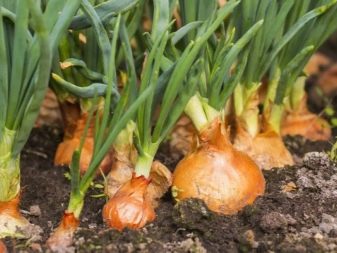
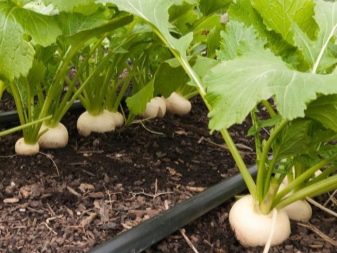
It is noteworthy that the length of the roots of the predecessor vegetables plays an important role. So, If you plant garlic before winter, then it will receive nutrients from the upper layers of the soil, so crops with long roots will be the best predecessors. Novice summer residents often divide the garden into zones. For example, a certain area is allocated for garlic, which is given the uncomplicated name "garlic bed". In no case should this be done, since the next year this soil will be depleted by the precursor garlic.
It is recommended to return the garlic to its original place not earlier than after 6-7 years. This rule must be observed without fail, since existing pests can persist in the same area for up to 5 years. Neighborhood is important for garlic. If the most suitable predecessor was chosen, the care of the crop is carried out according to all the rules, but the harvest is still unimportant, then you should pay attention to the neighbors in the garden. Garlic itself actively fights against fungal diseases, prevents the growth of spores, is a fungicide and insecticide. These properties allow it to fight most diseases and pests.
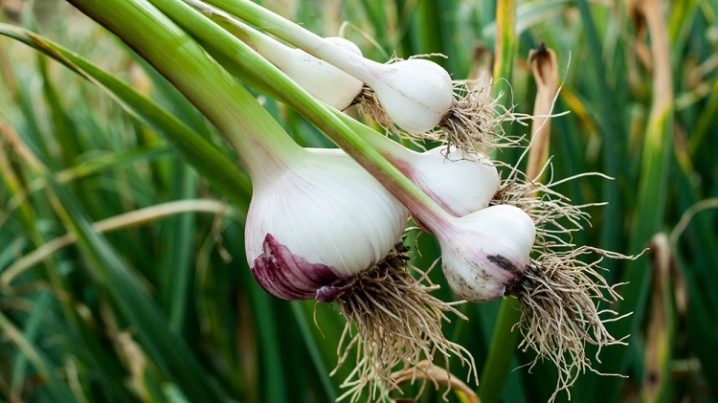
Carrots and garlic do not match each other as predecessors, but they get along well in neighboring beds. So, the latter is actively fighting carrot pests, for example: carrot fly or leaf beetle. Also good neighbors for garlic are all vegetables belonging to the Solanaceae family. This group includes: tomatoes, peppers and eggplants. They grow much better and are less susceptible to all sorts of diseases. Some gardeners prefer to plant garlic next to a potato, as it scares off the Colorado potato beetle. Berries will become good neighbors: strawberries, wild strawberries, raspberries, currants and some others.
For to make sure that the crop rotation is correct, it is recommended to read the reviews of experienced summer residents. Most of them agree that garlic is not recommended to be planted after garlic and onions of any kind. This depletes the soil and also prevents a good harvest. Most of them, after harvesting the crop, plant the former garlic bed with siderates (preference is given to mustard) or herbs, for example: salad or dill. If you follow the basic rules of crop rotation, then you can not worry about a poor harvest of garlic. Also, during the entire period, you will not have to actively fight against pathogens of garlic diseases.
It is important to alternate the beds with each other, as well as to provide correct and timely care of the crops.
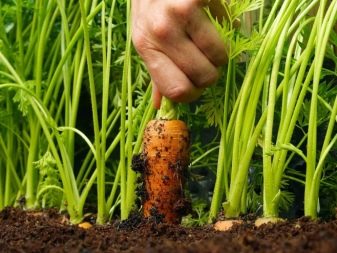
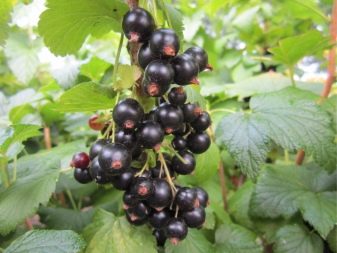













The comment was sent successfully.